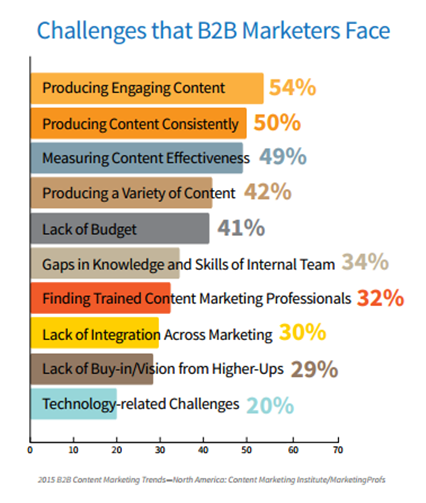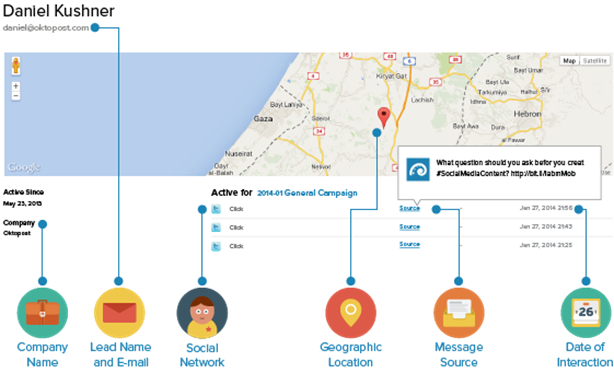While there are major proponents of ROI (return on investment) measurement for modern marketing activities, there are a few critics who argue against measurement. Scott Stratten, author of UnSelling, when asked about the importance of measuring ROI of social media marketing has responded, “Well, how do you measure the ROI of your phone?”
While he makes a valid point, one could argue that, if ‘big data’ was around when phones were invented, it is quite possible we would have explored how to measure phone activity against business results. This would definitely be true for advertising, if this quote were any indication:
I know only half of my advertising works. The problem is I don’t know which half.
– Henry Ford (also attributed to John Wanamaker)
Since the information is available today, and analysing it will help us perform better online and on paper, measuring ROI makes sense. If the tools are available to you, why not use them to help grow your business?
The Challenge of Measuring Marketing ROI
Now that most, if not all, B2B marketers are using some type of digital marketing, one of the biggest questions being asked is how to measure the results of their efforts. According to the Content Marketing Institute’s B2B Content Marketing 2015 survey, 49% of B2B marketers had challenges with ‘measuring content effectiveness.’ This means nearly half of marketers are blindly going through the actions without knowing if they are having any impact on the business or simply just wasting time.
 Challenges that B2B Marketers face going into 2015 (Source: Content Marketing Institute)
Challenges that B2B Marketers face going into 2015 (Source: Content Marketing Institute)
ROI is Not Only about Money
The term ‘return on investment’ in financial matters, refers strictly to money – how much revenue was earned vs. how much money was spent. However, due to the complexities of marketing and the varying length and touch points (when potential buyers interact with the brand) of the buying process, ROI measurement should focus on a lot more than the final dollar figure to be truly effective – think of it as a process, rather than a destination.
ROI should instead be redefined as any desired action prompted by the marketing activities of the organization – guided by the marketing strategy and objectives. Depending on the goals of business, some of these could be:
* Social media sentiment
* Whitepapers, e-book or other downloads
* Email Marketing newsletter
* Clickthroughs on sales pages
Measuring these activities will give you the full picture of how your marketing tactics are performing and what stages need improvement.
Goal Setting and Metric Selection
The first step to measuring ROI is outlining the stages of the buying process for your customers, based on the marketing funnel. The best way to bring customers through the funnel is to align marketing efforts to each level. The marketing analyst must then isolate the metric that indicates a conversion from one stage of the funnel to the next. This way, you can tell how many persons are progressing and determine, at each level, what can be done to improve those rates.
 The B2B Sales Funnel and content marketing ideas for each level (Source: Explara.com)
The B2B Sales Funnel and content marketing ideas for each level (Source: Explara.com)
It’s best to impose a limit of 3-5 metrics that truly matter, so that you can focus specifically on improving those. These metrics must be relevant to you, your boss and the CEO. They need to give a snapshot of your current performance, based on your current spend and activities, and what you anticipate future performance to be, based on metrics at the previous funnel level. Vanity metrics, such as Facebook likes and website visits, indicate nothing on their own.
Let’s examine some of the underlying problems in organizations that affect the ability to measure ROI effectively and how they can be adjusted.
The Big Organizational Divide between Sales and Marketing
For two departments that are so closely connected in the big picture, sales and marketing teams seem to always have their own agendas and goals in B2B organizations. It’s not rare to see the marketing team celebrating a big win for generating a ton of new leads while the sales team, in that same period, cries into the keyboards because the leads weren’t very good or vice versa, when sales breaks records but marketing isn’t able to use that to their advantage because they can’t track the leads that converted.
For ROI to be measured effectively, the sales and marketing team need to work together. Most importantly, they need to share similar goals, outlining how either team contributes to that goal; and use CRM (customer relationship management) tools and systems that integrate with each other, so they can track leads from initial contact, to sale and beyond.
If social media is a huge component of marketing activities, which it usually is, Oktopost.com is a great social media management platform made specifically for B2B marketers. It has lead management capabilities and syncs with some of the most popular CRM software including Salesforce, Marketo and Act-On for instance, for genuine marketing and sales integration.
 Oktopost’s lead data capturing feature (Source: Oktopost)
Oktopost’s lead data capturing feature (Source: Oktopost)
Simplifying the Complex B2B Sales Process
Due to the length and complexity of the buying process, it presents several problems which affect ROI measurement.
Social media engagement is usually initiated by one person in an organization, but others tend to get involved as the buying process progresses. It’s very likely that the person who made initial contact and engaged with the marketing team isn’t the one who completes the sale with the sales representative. It’s important, therefore, that CRM software attributes all individual contacts to an organization, so that the person analysing the metrics can see the big picture.
Communication is usually a one-way street – marketing acquires leads then passes them down to sales to convert them to customers. Sales representatives, however, often have a lot of knowledge to contribute to the marketing process, being the ones who interact daily with prospects. Having a system shared between both departments allows the analytics team to mine deeper and find out more about the customers that convert in the final stages of the buying process, versus those who don’t.
Not only can ROI be measured, it should be measured by any organization that wishes to improve its bottom line. Selling to business customers present a unique set of challenges to the analytical marketer, but with effective planning and strategizing from the outset, these will no longer be an obstacle. Results are not immediate; the purpose of tracking ROI is to improve growth over time, so be prepared to execute the long game, but know that you’ll win in the end.




Be the first to comment on "You Can’t Improve what you’re Not Measuring – How to Determine the Real ROI of B2B Marketing"